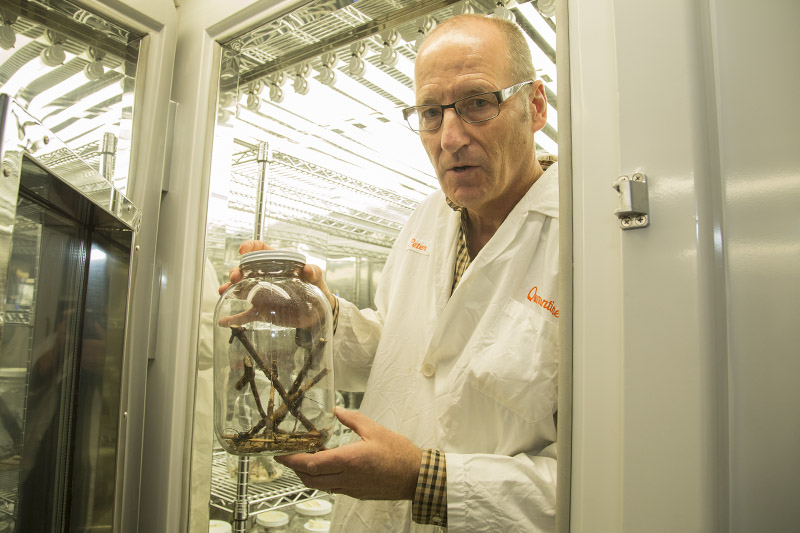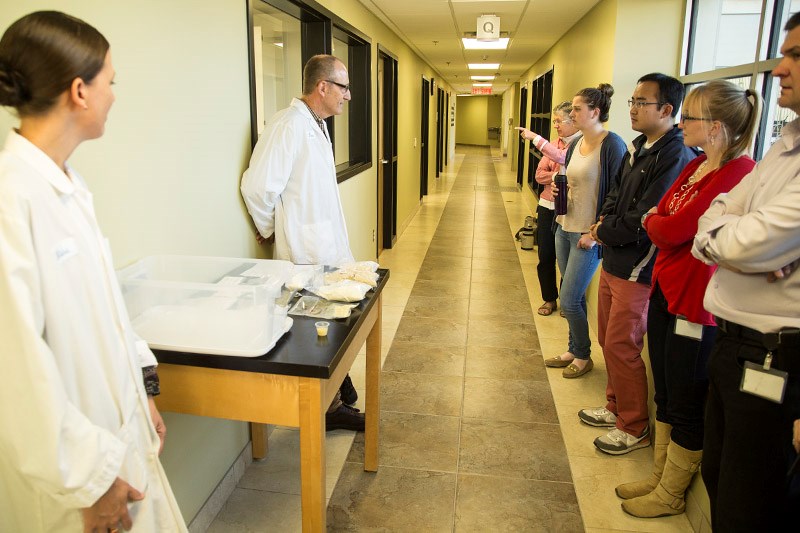
Employees at the Great Lakes Forestry Centre (GLFC) were invited to watch the “bug lab” in action Wednesday as part of a national science event.
National Science and Technology Week offered the centre an opportunity to show its employees, many of whom work behind a desk, the insect production facilities.
“It’s an opportunity to draw attention to some of the stuff we do,” said Peter Ebling, manager of Insect Production Services.
Many employees who work elsewhere in the office areas have never had the opportunity to watch the Insect Production and Quarantine Laboratory areas produce food or see where the insects are actually bred.
Insects that are bred at the GLFC include Asian long-horned beetle, spruce budworm and cabbage looper, among others.
Ebling said the cabbage looper is the equivalent of the white mouse in mammal laboratory studies and is used for that purpose across the world. The GLFC produces about 1 million cabbage loopers per year and up to 2 million Asian long-horned beetles.
Rearing that quantity of those insects requires a lot of food.
Their diet is created from pre-prepared mixes because bringing in natural plants could also expose the insects to pathogens that could harm them or interrupt the breeding process, Ebling said.
“We have different recipes for different insect species, because they all have different nutritional requirements,” he said.
Those diets also vary within the same insect species through different stages of their life. An adult asian long-horned beetle doesn’t eat the same food as the larvae.
The GLFC breeds insects and makes the diet for their own in-house research, but also ships them to various universities and business across the world.
“There are no other places in the world that do what we do in terms of our quality management system. We produce a good product, wether it be our insects or our diet,” said Ebling.
The centre produces product for about 20 universities and has clients as far away as Italy and Belgium.
As a result many people from around the world look to gain experience by volunteering at the GLFC.
The centre currently has volunteers from Vancouver, France and Kenya, said Ebling.
“We have people lining up to volunteer with us, to gain experience in our lab,” he said.
(PHOTO: Peter Ebling, manager of Insect Production Services at the Great Lakes Forestry Centre, shows an enclosure for an Asian long-haired beetle during a tour of the Insect Production Services lab on October 22, 2014. Kenneth Armstrong/SooToday)
